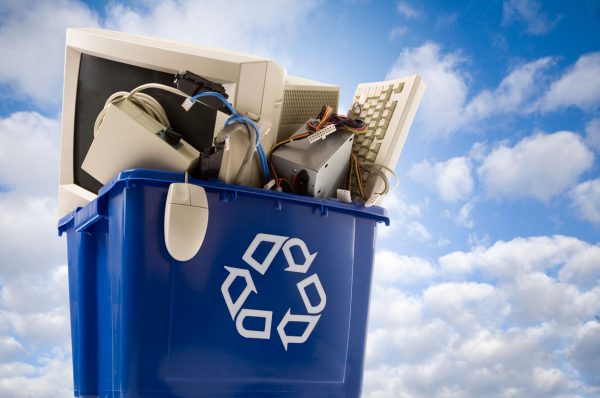If you’re looking to recycle your electronics, this article is for you. Learn about the WEEE Directive, batteries, R2 standards, and the second-hand market. Once you’ve finished reading this article, you’ll be well-equipped to tackle the challenges facing electronics recyclers today. You’ll be able to take control of your electronics’ fate and be an advocate for environmental awareness.
Batteries Directive
The EU batteries directive (EU-Batt). The EU’s goal is to protect the public interest and minimize the negative impact of battery production and use. The Directive also addressed the entire battery waste cycle and was a compromise between environmental proponents and manufacturers. The proposed Regulation will come into effect in 2022. But a delay is inevitable, and many will campaign for an extension.
The EU-wide Batteries Directive requires that batteries be marked to indicate separate groups, chemical content, and hazardous substances. In addition, batteries should display a recycling symbol of a wheeled bin, crossed out. The symbol size is set at 3% of the battery’s largest surface area and 1.5% of the surface area for cylindrical batteries. Member states must establish effective penalties for non-compliance and notify the European Commission of any changes.
WEEE Directive
The European Union (EU) has implemented the WEEE Directive into national laws in Finland, Sweden, and Norway. These countries have excellent WEEE recovery rates, with Finland, Sweden, and Norway being among the highest in Europe. The Nordic countries have established successful recovery infrastructures and have met or exceeded the Directive’s collection requirements. Finland’s legislation was enacted shortly after they passed the EU legislation. As a result, nordic countries have taken the lead in the global WEEE recycling movement, and their WEEE collection systems are exemplary.
The WEEE Directive aims to improve the environmental performance of all those involved in the lifecycle of electrical and electronic equipment by increasing the number of materials recycled. Producers will be responsible for collecting, sorting, and recycling electrical and electronic equipment. The EU legislation covers both consumer and professional WEEE and specifies how these items should be disposed of. To comply with the WEEE Directive, producers must employ the most advanced recovery and treatment techniques to make them recyclable and safe for human use.
R2 standard
The R2 standard for electronics recycling is an internationally recognized certification that requires third-party recyclers to adhere to specific criteria. It is important to note that, to be certified, a recycler must first have an ISO 14001 or ISO 45001 certification or its equivalent. Getting approved for R2 is a lengthy process involving several steps and process implementations. The first step is filling out an application form with SERI and designating a point of contact.
The R2 standard was developed by a multi-stakeholder group, including industry leaders, environmental agencies, and other interested parties, to encourage responsible electronics recycling practices. The standard covers thirteen key provisions that promote the safe and environmentally sound management of electronic waste. It also holds e-recyclers accountable for the destruction of data and secure electronic waste disposal. The R2 standard for electronics recycling is the industry’s leading certification. You can learn more about this through different places online or a place within your locality. An example is Fort Lauderdale electronics recycling.
Second-hand market
A recent article in the Chinese Communist Party’s China Daily explores the growth of the second-hand electronics market in the country. According to the Ministry of Industry and Information Technology, China discarded about 524 million mobile phones last year, but only 2% were recycled via formal channels. Many consumers are unwilling to part with their old devices, and they end up clogging landfills before reaching their end-of-life.
If your old gadgets are in good condition, you can try selling them on a resale site, such as eBay or Craigslist. You can also donate them to a charity that refurbishes them for a poorer audience. This option will give you a tax deduction as well. However, selling old gadgets online is not always the best option. However, if you want to quickly get rid of old devices, you can consider donating them to charity organizations. These organizations refurbish these gadgets and sell them to those in need.
Hazardous waste products
Several products in electronics recycling are considered hazardous waste. These products contain toxic substances such as mercury. They are not accepted for disposal in the garbage because of their toxicity. The California Department of Toxic Substance Control lists several types of hazardous waste. For example, televisions and computer monitors with CRTs have been deemed dangerous waste. These products contain five to seven pounds of lead, cadmium, silver, gold, and other heavy metals, and they can leach into landfill outflows. This can cause contamination of groundwater.
Consumer electronics can include various electronic devices, from VCRs to radios, cell phones, and small appliances. Collectively, these products are known as electronic waste. Electronic waste has become one of the fastest-growing portions of the waste stream because newer electronic equipment becomes faster, cheaper, and more efficient. However, many consumers do not replace their electronics, causing them to become obsolete. The EPA estimates that 26 to 37 million computers became outdated in 2005, contributing to 1.9 to 2.2 million tons of waste.

